Discover Wildlife Explore Nature in Essex Page 36

Coastal creatures to spot Page 27 butterflies on Page 14

How the distribution of butterflies may be changing in Essex
Restoring Essex's underwater meadows Page 34 Summer at our Nature Discovery Centres
Saving seagrass
The magazine for Essex Wildlife Trust members Issue 127 | Summer 2024



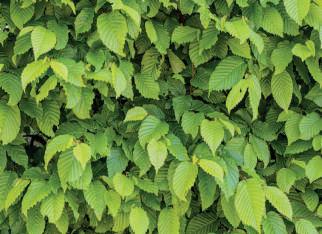



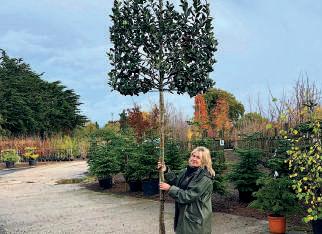



King & Co The Tree Nursery, Dunmow Road, Rayne, Nr Braintree, Essex, CM77 6RY Visit the Nursery Monday - Friday 9 - 4pm Tel: 01376 340 469 Email: sales@kingco.co.uk BUY ONLINE: www.kingco.co.uk Local Trees and Hedging in Essex NATIVE & ORNAMENTAL TREES WILDLIFE FRIENDLY PLANTS PLEACHED TREES INSTANT HEDGING BOX HEDGE ALTERNATIVES EVERGREEN SCREENING TREES Choose plants online... Delivery to your door Trees and hedging plants available for fast delivery across Essex Send photos of your garden for advice, for the right tree in the right place


Welcome

to the summer edition of Wild Magazine – the magazine for Essex Wildlife Trust members.
Since taking on this role, I have had several messages of support from members. These messages remind me that the warmth and compassion that characterises both staff and volunteers also typifies our fantastic members, perhaps because many of our best human qualities are engendered by a love of the natural world, which can be a uniquely binding force.
On the subject of binding forces, it would be remiss of me not to mention the forthcoming General Election, which will take place on 4 July. Whatever our political leanings, now, more than ever, we need to vote for nature.
As a long-term member myself, one of the things I value most about being part of the Trust is that our membership is a fellowship that, among other things, enables us to have strength in numbers, regardless of our party colours. A shared love of wildlife and the natural world can be the common ground within the larger political battleground.
In whatever capacity you can, I would urge you to ask your preferred parliamentary candidate to prioritise nature’s recovery in Essex. Without nature, there is no economy, no food security, no shelter, no breathable air, and no health. The natural world is not in competition with these priorities, it is the foundation of them – the root system of a healthy society.
One of the best ways for us to have strength in numbers is to stay in touch. We are currently modernising our membership systems so that we can communicate with you more effectively, so if you’re happy to share your email address and haven’t already done so, please contact the Membership Team. If you’re comfortable reading the magazine online, you can go even further by converting to our digital-only ‘Green Membership’ which will help us to save money and resources.
However you engage as a member, now or in the future, we are incredibly grateful. Managing a hundred nature reserves, working with partners across the county to deliver the best outcomes for wildlife, and providing great outdoor education experiences to 40,000 children every year – the future stewards of our natural world – is not an easy or inexpensive endeavour. And this is just a snapshot of our work.
We could not do any of this without you.
Best wishes for a wonderful summer.
Rich Yates Interim CEO and Director of Engagement
We really hope you enjoy receiving your magazine. If, however, you would prefer to convert to our digital-only Green Membership, please contact the Membership Office on 01621 862964 or by email at members@essexwt.org.uk. We will be delighted to help you manage how we communicate with you.
www.essexwt.org.uk
MEET THE WILD TEAM
Editor-in-Chief
To advertise in WILD magazine contact marketing@essexwt.org.uk Editorial Assistant
Cosson Art Director
WILD is the magazine of Essex Wildlife Trust and is published four times a year: Spring, Summer, Autumn and Winter
No. 127 Summer 2024 ISSN 2756-0066
All enquiries to: Essex Wildlife Trust, Abbotts Hall, Great Wigborough, Colchester, Essex, CO5 7RZ
T 01621 862960 E enquiries@essexwt.org.uk www.essexwt.org.uk
Reg Charity No. 210065 VAT Reg No. 945745977 Company Reg No. 638666 England
Copyright © Essex Wildlife Trust 2024
WILD magazine includes adverts from third-parties. However, services offered by advertisers are not specifically endorsed by Essex Wildlife Trust. The income from advertisements goes towards the cost of printing and postage. This means that more of your membership donation goes directly towards conservation. Adverts must conform to the British Code of Advertising Practice.
The Trust is a corporate member of The Wildlife Trusts.
The views expressed in this publication are not necessarily those of the Trustees of Essex Wildlife Trust.
We are the county’s leading conservation charity, committed to protecting wildlife and inspiring a lifelong love of nature. We manage nature reserves and discovery parks across the county, providing outstanding outdoor learning and preserving places of wonder.
Founded in 1959 by volunteers, we protect over 100 sites across Essex and are supported by 40,000 members.
Our climate is in crisis and nature needs our help. Together we can protect the future. Join us.
We are one of the largest Trusts that work together throughout the British Isles as The Wildlife Trusts.
Welcome 3 WILD Summer 2024 |
with partners across the county to deliver the best outcomes for wildlife.’ Issue 127 | summer 2024 Join the conversation: Essex Wildlife Trust @essexwildlifetrust @EssexWildlife EssexWildlife @essexwildlifetrust Essex Wildlife Trust
‘working
Emily
Executive Editor Rich Yates Editor
Printing The
Jamie
Front cover photo: marbled white - rhoenes - stock.adobe.com
Buttress
Lauren
Lottie Hall Designer Tasha
Mound
DS Group Advertising
Watt
Gemma Cosson

Locating
lost ponds
How the Trust is restoring a historic network of ponds around the county.
Page 22
| 4 WILD Summer 2024

WHAT’S INSIDE
6 Trust News
Updates from throughout the Trust on our work to protect wildlife and inspire a lifelong love of nature.
11 Your Wild Essex
A stunning selection of images showcasing our wild and wonderful county, taken by you.
18 wildlife gardening
How a herb garden can be a great addition to any sized garden.
20 Lasting legacies
We celebrate the lasting legacy of Mary Colton, who left a gift in her Will to protect the countryside she cherished.
27 Summer species to spot
Coastal creatures to look out for along the 350 miles of Essex coastline this summer.
28 dates for your diary
Save the date. We highlight some of our events schedule for the summer months.
42 National news
Updates from The Wildlife Trusts movement on national projects and campaigns for wildlife.
44 time tunnel
We travel back in time to the year 2009 to see what was happening at the Trust.
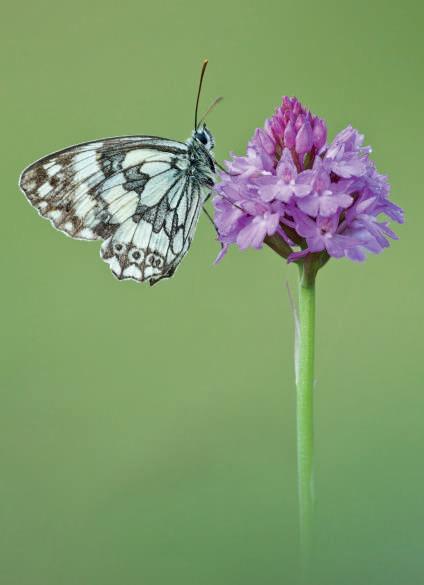
14 Butterfly Seekers
Now in its second year, this citizen science project to record butterflies throughout the county has already had some interesting findings.
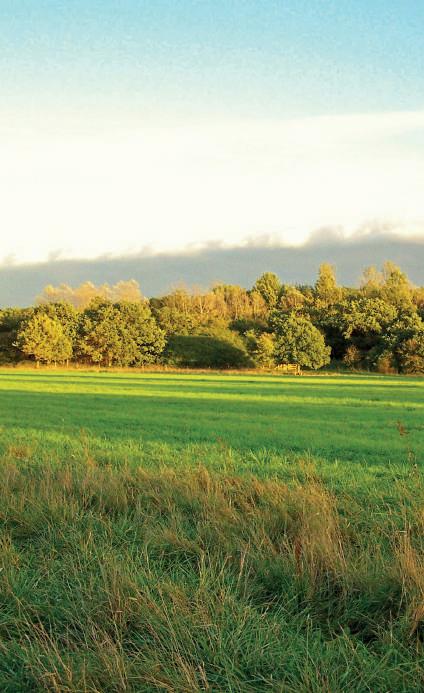
30 Under the spotlight: Roding Valley Meadows
The largest remaining water meadow in Essex, with a mosaic of habitats that support an abundance of wildflowers and invertebrates.

36 Saving seagrass
Restoration of seagrass meadows is underway as we aim to increase the presence of this crucial habitat on our coastline.
common frog: Mark Hamblin/2020VISION Marbled white - Guy Edwardes/2020VISION,
Stories and news from throughout the Trust on our work to protect wildlife and inspire a lifelong love of nature across Essex. Written by our staff, volunteers and members of our Local Groups.


one year on at blue house farm's wetland creation
James Astley Grants and Trusts Officer
Last year, the Trust completed a 40-hectare wetland creation project at Blue House Farm nature reserve thanks to funding from Biffa Award. Since then, wildlife has been enjoying this muddy, marshy grassland and settled into their new home. Sightings from informal volunteer counts have shown over 40

avocet pairs, over 20 lapwing pairs and possibly, the highest number of redshank that the site has seen - just in the project area alone.
This is a great site for a wildlife walk or coastal stroll, and you can enjoy sightings of our lovely lambs that have joined the grazing team. Please keep dogs on leads if you are visiting.
6 WILD Summer 2024 |
WILD Summer 2024 Wildlife WildlifeWinsWins Trust news
Avocet: Terry Whittaker/2020VISION

Collecting data for saltmarsh research
Rachel Langley Head of Marine and Coastal Recovery
The coastline of Essex is famous for its miles of saltmarsh, that supports a variety of wildlife – from bees to birds to fish. Saltmarsh is an incredibly important habitat that has the ability to sequester and store huge amounts of carbon, but over recent centuries, we have lost 85% of our saltmarsh habitat in England.
To contribute to the UK’s understanding of our saltmarshes, Essex Wildlife Trust is hosting a UK Centre for Ecology and Hydrology (UKCEH) and Environment Agency Flux Tower (one of only six towers in the current coastal carbon flux network) at Abbotts Hall Nature Discovery Park, in the Blackwater Estuary. This project is funded by the Defra marine Natural Capital and Ecosystem Assessment (mNCEA) programme. Data gathered from the Flux Tower will help fill the evidence gaps required for saltmarsh habitats to be included in the UK’s Greenhouse Gas Inventory and will contribute to the development of a UK Saltmarsh Carbon Code.

Help protect beach-nesting birds
Adam Nixon Coastal Ranger
Every summer, the shores of Essex's coastline are home to ringed plovers, oystercatchers and little terns. These birds all nest on the ground amongst the sand and shingle of our beaches. The Share Our Shores project is a collaboration between Essex Wildlife Trust, the RSPB and Bird Aware Essex Coast to help protect and monitor our beach-nesting birds as well as to raise awareness of the pressures they face, from both human disturbance and climate change. In 2023, the nesting season was a great success with 44 little terns fledging the county, the highest number since 2003 and over double the total of 2022. Ringed plovers performed well at most sites with 24 young fledging. We discovered that oystercatchers struggled, with only six known coastal fledglings. This is something we’ll be paying close attention to this year.
In April, we marked the start of the beach-nesting season by putting out our temporary fencing at Colne Point, Tollesbury Wick and RSPB Old Hall Marshes nature reserves. We do this every year to provide space for the birds to nest safely, as well as to provide a barrier to prevent human disturbance. We look forward to updating you later in the season.


Dive into Marine Week
Gemma Cosson Campaigns Assistant
We’ll be talking all things marine from the 27 July to 11 August. From playful orange seals basking along the coastline to the carbon-capturing habitats fighting climate change, Essex has got a bucket-load of amazing marine life to celebrate. Keep your eyes peeled for beach cleans, social media quizzes and last but not least, our Coastal Creations Art Competition! Last year, three talented individuals won a bundle of goodies and had their artwork displayed in The Naze Nature Discovery Centre. We’ll be announcing more about the competition in July, so crab your paintbrushes and look to our glorious coast for inspiration. Find out more at www.essexwt.org.uk/marine-week
7 | Trust news
WILD Summer 2024
Reese Merrifield
Rebekah Weatherhead

Essex's busy bat cam
Lauren Cosson Communications Manager
Have you been following our bat roost at Hanningfield Reservoir Nature Discovery Park? Every year, the maternity roost box starts to fill up with tiny soprano pipistrelle bats. Our webcam gives you a chance to watch them up close without any disturbance. With hundreds of thumb-sized bats wriggling, preening and swooping on screen, you’ll be hooked! If you’re a night owl, tune in after dark to see even more action from these nocturnal creatures.
Watch them live: www.essexwt.org.uk/webcams
Biodiversity plans for Abbotts Hall
Naomi Andrews Project Manager
Conserving heath fritillary butterflies
Tiffany Rogerson Area Officer (South East Essex)
Did you know, you can see one of the UK’s rarest butterflies in Essex? In collaboration with Butterfly Conservation and Southend City Council, we continue to manage Hadleigh Great Wood nature reserve to help our population of heath fritillaries. With the help of dedicated volunteers, our teams carefully clear thick vegetation like bramble and bracken, and coppice the area. This allows more light to the ground and encourages the heath fritillaries’ favourite plant to eat, common cow-wheat. If you come to spot these special fluttering insects, please take care and stick to marked paths.

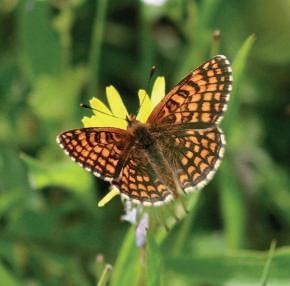
In February, new regulations were put in place by local planning authorities to ensure that all developers deliver at least a 10% biodiversity net gain. This means that a site needs to be more biodiverse than before its development started. Developers who are unable to achieve this on their own land can purchase units or credits elsewhere. Essex Wildlife Trust are in the process of registering Abbotts Hall under the new scheme. To support our plans to reinvigorate the landscape at Abbotts Hall, we are placing approximately 50 hectares of formerly arable land under the new Biodiversity Net Gain scheme, run through Natural England.
The income received from agreements via our local planning authority will go directly to enhancing the landscape at Abbotts Hall, creating diverse and varied habitats to support wildlife. Our plans include the reopening of our site to members and the public in late 2025.
For more information about our Biodiversity Net Gain scheme, please contact me via email naomia@essexwt.org.uk or call 01621 862960


8 WILD Summer 2024 | Wildlife Wins
Trust news
Heath fritillary - Vicky Nall
Heath fritillary caterpillar - volunteer Charlie

Rare chalk grassland habitat at Chafford
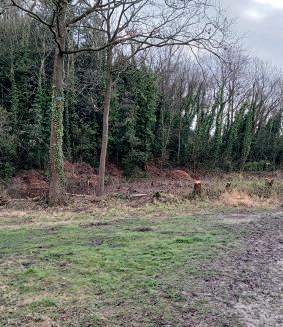
 Dean Williams Ranger at Chafford Gorges Nature Discovery Park
Dean Williams Ranger at Chafford Gorges Nature Discovery Park
Last year, More Marvellous Meadows launched at Chafford Gorges Nature Discovery Park. This project aimed to restore rare chalk grassland, the most biodiverse habitat on land in the UK. Sadly, there’s less than 1% of chalk grassland remaining, making it rarer in the world than rainforests. However, we have finished restoring over one and a half hectares of chalk grassland and early successional habitat at Chafford Gorges. About a third of this nature reserve is designated a Site of Special Scientific Interest (SSSI) and supports rare insects that are found in the Grays Thurrock Chalk Pit. In the century since quarrying ceased here, a lot of habitat was lost to secondary woodland – this grows when an area is previously cleared for other uses and then left unmanaged.
We continue to survey our reserve and, using this data, we selected secondary woodland areas with the lowest biological interest to restore them back to chalk grasslands. This work started in September, as we began clearing the woodland here. We utilised stumps and log piles for insects, reptiles and other hibernating species over the winter. These were carefully uprooted in the springtime, some now turned into hibernaculums for snakes, lizards, slow worms and frogs. Lastly, a thin top layer of organic topsoil has been scraped to reveal chalk bedrock, allowing grasslands to return.
We invite people to come and see the progress of this project and see how previously opened areas have resulted in the rare orchid species that exist today, best seen in June.
Buzzing about bumblebee surveys at Gunners Park and Shoebury Ranges
Daniel Garrun Ranger at Gunners Park and Shoebury Ranges nature reserve
Bumblebees are a familiar site across the county but we're only just starting to tap into the remarkable honeypot of information that they can provide when it comes to managing our nature reserves. Using the Bumblebee Conservation Trust BeeWalk methodology, a year-long survey conducted in 2023 at Gunners Park turned up some fascinating data, allowing us to pinpoint exactly where in the reserve we have good year-round pollen sources and where we don't. We were able to identify gorse, nettle and red clover as key plants for spring and red bartsia, horehound and ivy as key plants for autumn.
With this knowledge, we can plan our mowing schedules and precisely pick target areas for scrub or invasive species removal to create the best conditions for specific high-value flowering plants at those periods in the year where climate change is likely to have the worst affect. If we notice a dip in bee population at a specific time of year, we can look to plant native flowering plants that come into flower at the right time to bridge the gap. In 2024, we'll be expanding our bumblebee surveys to more sites. If you'd like to get involved or set up your own survey at one of our nature reserves you can contact me via email at danielg@essexwt.org.uk
9 WILD Summer 2024 |
Trust news

News from our Local Groups
Havering Local Group David Marshall, Chair
The group has engaged in a range of informative walks and discussions including enlightenment. Our AGM also featured an update from Jez Dagley (Director of Conservation) on ongoing Trust conservation projects. With over 1,000 members in Havering, it is hoped others may consider joining the current team and assist in arranging events encouraging an interest in wildlife. If you are interested, please email david.c.marshall@talk21.com
Braintree Local Group
Marion May, Secretary
In March, we hosted a wonderful talk on amphibians by Jon Cranfield. In addition, attendees were given the opportunity to see live amphibian specimens. In April, Greg Conway from the British Trust for Ornithology gave a fascinating talk on nightjars. Our Events Coordinator, Tracey Kay, will be taking a break from arranging our events and so we have no further events scheduled. If you are interested in taking this role, please contact kay.tracey@yahoo.co.uk. We would like to thank Tracey for all the fantastic talks she has arranged and for all her hard work.
Chelmsford Local Group
Sue McClellan, Chair
Our ever-popular quiz in March was another success, resulting in us donating a substantial sum towards the Fir Tree Wood appeal. This wild area is "on our patch", hence we're especially keen to protect it for nature. At our very well attended AGM, our committee of five was ratified, meaning that we're all set to continue to engage with our many supporters through our successful summer group walk and evening talk programme. Sue Schwar, South Essex Wildlife Hospital, presented an inspiring talk, followed by a range of questions; a sign of her having generated lots of interest. We're having a break from evening talks but ready to resume on 25 September with ‘British Birds of Prey’ by Alasdair Greenyer. Thank you for your continued support.
Southend, Rochford and Castle Point Local Group
Gary Broad, Treasurer
Having recently relaunched the Southend and Rochford Local Group, (we also welcome anybody interested from the Castle Point area), your new and much expanded committee is working enthusiastically on a programme of summer activities and reserve walks. These will then be followed with a program of autumn/winter indoor meetings. Follow us on Facebook (Essex Wildlife Trust Southend and Rochford Local Group) and join our direct mailing list by sending an email request to sandrewtlg@gmail.com
Uttlesford Local Group
Tony Morton, Chair

Throughout spring we have listened to woodpeckers drumming while we work in West Wood nature reserve, accompanied by a chorus of birdsong. Some of our volunteers are doing bird surveys in West Wood and have discovered a small population of marsh tit, a notable find of a species which has been in decline in Essex. Spring flowers have also been visible, with oxlips, early purple orchids and herb Paris (as pictured). Did you know, herb Paris’ Latin name is Paris quadrifolia, meaning four leaves, but it can also have three, five and six leaves. Only a single flower develops in the centre of the leaves making one black/purple berry. The plant is poisonous so it does not get eaten by the numerous deer in the wood.
Tendring Local Group
David Bain, Honorary Secretary
Our AGM was held in February at The Naze Discovery Centre with two new committee members elected. Wardens’ illustrated reports included Adam Nixon’s images from remote cameras monitoring shoreline bird nests at Colne Point that graphically confirmed fox and carrion crow predation. Copies of our popular 2023 Colne Point book remain available. Waterlogged ground at Barnes Spinney, Walton put our April 7 annual plant sale in jeopardy. However, unprompted neighbour Pauline Chumbley kindly came to the rescue and offered to hold it in her garden with over £1,400 raised. The Bluebell Day at Weeleyhall Wood in May and pond-dipping and open day at Great Holland Pits in June conclude our short outdoor season of formal events.
Brentwood and Billericay Local Group
Graham Clegg, Chair
In the spring, Jon Cranfield gave us a talk on the work which he and his father have done at Nevendon Washland, Basildon, and later he was able to show us his work in person as he hosted our Local Group on a guided tour of this nature reserve. It was most impressive. On 13 June, members might like to join us for a trip to RSPB Minsmere, Suffolk. If that is too far, then a guided walk at Thorndon Park on 16 August may be preferable.
Trust news 10 WILD Summer 2024 | Meadow - Andy Bartlett

Help us understand how climate change is impacting our natural world by following these simple steps: 1Aprilto 30September Love Essex • Love Wildlife Registered Charity No. 210065 Find out more at www.essexwt.org.uk/ essex-bioblitz or scan this QR code. Download iNaturalist using the QR codes to the google play and app stores. Download the free iNaturalist app 1 Join ‘The Essex Bioblitz 2024’ project page 2 Take a photo of any wildflower using the app 3
The Essex BioBlitz
As wildlife (and people) hang up their winter coats and emerge from cosy shelters, the natural world starts to come alive in the springtime once again. With tottering chicks, blooming wildflowers, dazzling mating displays and more, there’s lots to see through the lens. Here’s a few fantastic spring photos that our members and supporters have shared with us.


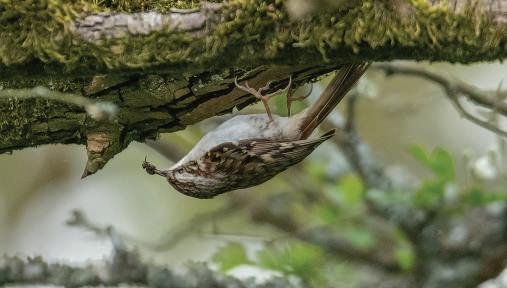

We knew skylarks could sing, but now it appears they can dance too! Mike
this
If you would like to feature in our next edition of WILD, please email your favourite images of Essex’s wildlife and wild places to magazine@essexwt.org.uk or tag Essex Wildlife Trust on social media.
12 WILD summer 2024 | Your Wild Essex
Inside out?! Like this photo by Jon Ward, @_fivefootseven, shows, green hairstreaks always sit with their wings closed because their undersides are more vibrant than their brown upperside.
Purple pop-ups! Julia Perry, @julia_p_60, captured the beauty of Essex’s bluebells in this photo.
If you’ve seen Stranger Things, you might think this treecreeper is in the Upside Down. Photo by Kayleigh Searles, @ksphotography1977
Smith, @mikecsmiffy, caught
super action shot.

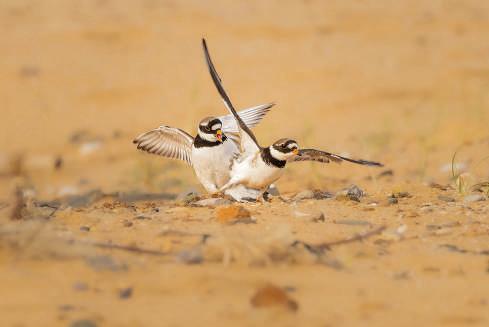
“Oi,
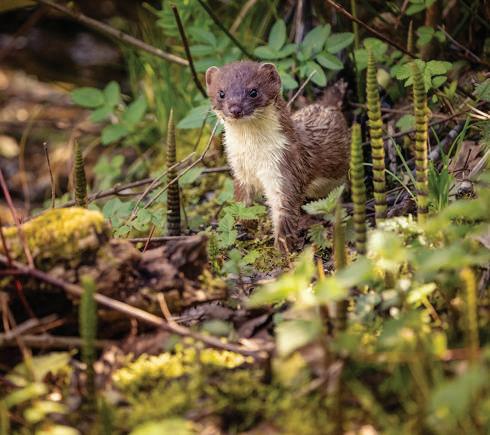

“I’ll do car park duty”. This bedraggled kestrel became part of our volunteer team for the day and was seen welcoming Robert Hawkins to Abberton.
13 WILD summer 2024 | Your Wild Essex #essexwildlifetrust
A graceful spoonbill was snapped by Paul James at Abberton Reservoir where we’re hoping to see some baby ‘teaspoons’ soon. Officially we mean chicks but we think this name would be much cuter!
he was taking a photo of me!” Nathan Martin , @nathdoesnature , snapped these squabbling ringed plovers on the coast.
Still as a statue. A curious stoat was exploring Phyllis Currie nature reserve when photographer Chris Mann, @cjmphotogrpahy88, had this lucky encounter.

Butter f lies on the move

14 WILD summer 2024 | Dawn Butterflieschoruson the move
Whether fluttering from flower to flower or twirling weightlessly in the wind above, the graceful flight of a butterfly demands to be witnessed. Find out how the Trust is helping these delicate creatures while they battle a changing environment.
Crucial creatures
Butterflies play a vital role in our ecosystem. They offer pollination and pest control services, act as a food source for animals such as nesting birds and brighten our gardens and natural spaces. Butterflies are indicators of the health of the environment for wildlife in general due to their sensitivity to environmental change. If there are good numbers of butterflies, we know that other insects, birds and mammals will be doing well too.
In decline
Despite being so widely loved, a 2022 report from Butterfly Conservation concluded that butterflies are declining. Climate change is thought to be having a vast impact on both butterfly species abundance and distribution. In fact, 80% of butterfly species have decreased in abundance, distribution or both, since the 1970s.
Butterfly Seekers
In 2023, the Trust launched a brand-new citizen science campaign called Butterfly Seekers to get a better picture of what was happening to all butterflies in Essex. From June to September, 271 citizen scientists across Essex recorded sightings of 10,155 butterflies. Thank you to everyone who took part! By finding out where different species can be found across the county, we can do more to protect them. Take a look on this page for the top 10 most common butterflies you spotted last year.
The results from last summer’s campaign were compared to historical data by our Conservation Evidence Team and it was discovered that the distributions of these important butterfly species may have changed dramatically in Essex in recent years.










Marbled white - Guy Edwardes/2020VISION
gatekeeper
Marbled white
Peacock
Speckled wood
Small skipper
holly blue
meadow brown
Red admiral
Small white
large white

Wall brown
In the 1990s, wall browns were seen fluttering throughout the entire county. It seems they may have found a new love of the Essex coastline, as they’ve recently only been reported in the south-east, within 5km of the coast.

Marbled white
This striking species has ventured across the county in more recent years, with Butterfly Seekers reporting marbled whites from the south of Essex to Saffron Walden. In the 1990s, marbled whites would only be found in the south of Essex.

White admiral
White admirals may be on the move too. Last year, Butterfly Seekers spotted this black and white beauty much further south than it’s previously been reported.
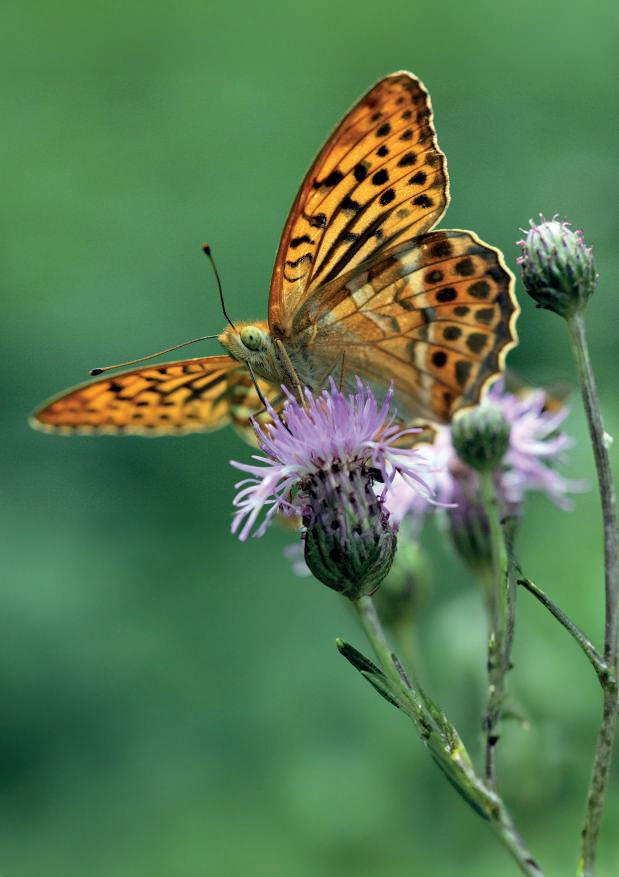
Silver-washed fritillary
An exquisite butterfly that was once found only around Southend and Clacton has now been spotted in Langdon, Hockley, Colchester, Wrabness and Saffron Walden.
Wall brown: Don Sutherland
Marbled white: James Adler
White admiral: suerob - stock.adobe.com
Silver-washed fritillary: Jim Higham
Contribute to butterfly conservation
We need to monitor all of Essex’s butterfly species to paint a full picture of how they are being impacted by climate change. You can help by taking part in this year’s Butterfly Seekers campaign from 1 March until 30 September. You don’t have to be an expert, just choose the image on the survey that looks most like the butterfly you’ve seen.
Follow our three simple steps to take action for butterflies:
1
2
3
Download the free ArcGIS Survey123 app and click ‘continue without signing in’
Download the Butterfly Seekers survey by scanning this QR code
Go butterfly seeking and record your sightings
Visit our website to see which butterflies have been spotted so far at www.essexwt.org.uk/ butterfly-seekers
Butterflies to spot this summer
There is something about the glimpse of painted wings that immediately stops us in our tracks. 32 different butterfly species can be spotted flitting and flapping across our county, but did you know that different species emerge at different times throughout the spring and summer? From splendid speckled woods to glorious gatekeepers, take a look at the beautiful butterflies you might spot across the summer months…
June
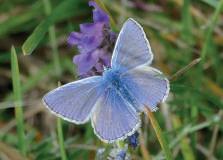



July

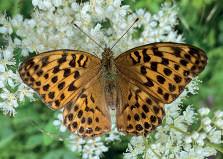


August




September




butterflies on the move 17 WILD summer 2024 |
Purple emperor: Tom Hibbert, white-letter hairstreak: Vaughn Matthews, gatekeeper: Emma Stack, purple hairstreak: Philip Precey, wall brown: Amy Lewis, small heath: John Bridges
Common blue Wall brown Small white White-letter hairstreak
Marbled white
lady Gatekeeper Meadow brown Small heath Small copper Silver-washed fritillary
emperor Comma Speckled wood Purple hairstreak
Red admiral Painted
Purple
Grow a delicious herb garden
Herbs have been used around the world for their medicinal and edible qualities for millennia, estimated at 60,000 years ago!
In the 6th century St Benedict drew up plans for how the monastic community should be laid out, which of course included a garden. This had to contain everything to sustain the life of the monks, and whilst the kitchen garden provided the food, the physic garden would contain all of the medicinal herbs. Those were the medicines in those days!
Not only are herbs great for us, but they also attract wildlife to gardens. Most people think of herbs for seasoning food, which of course they are excellent at doing. So, when I’m asked, ‘which herbs should I grow?’, invariably I reply, ‘the ones you like to eat’! And that’s the best place to start, as many herbs are better when they are repeatedly picked or cut, as they shoot new leaves, which are more flavoursome and potent than older leaves.
Herbs can be grown very easily in small spaces, indoors in a pot on a windowsill, or outside in a
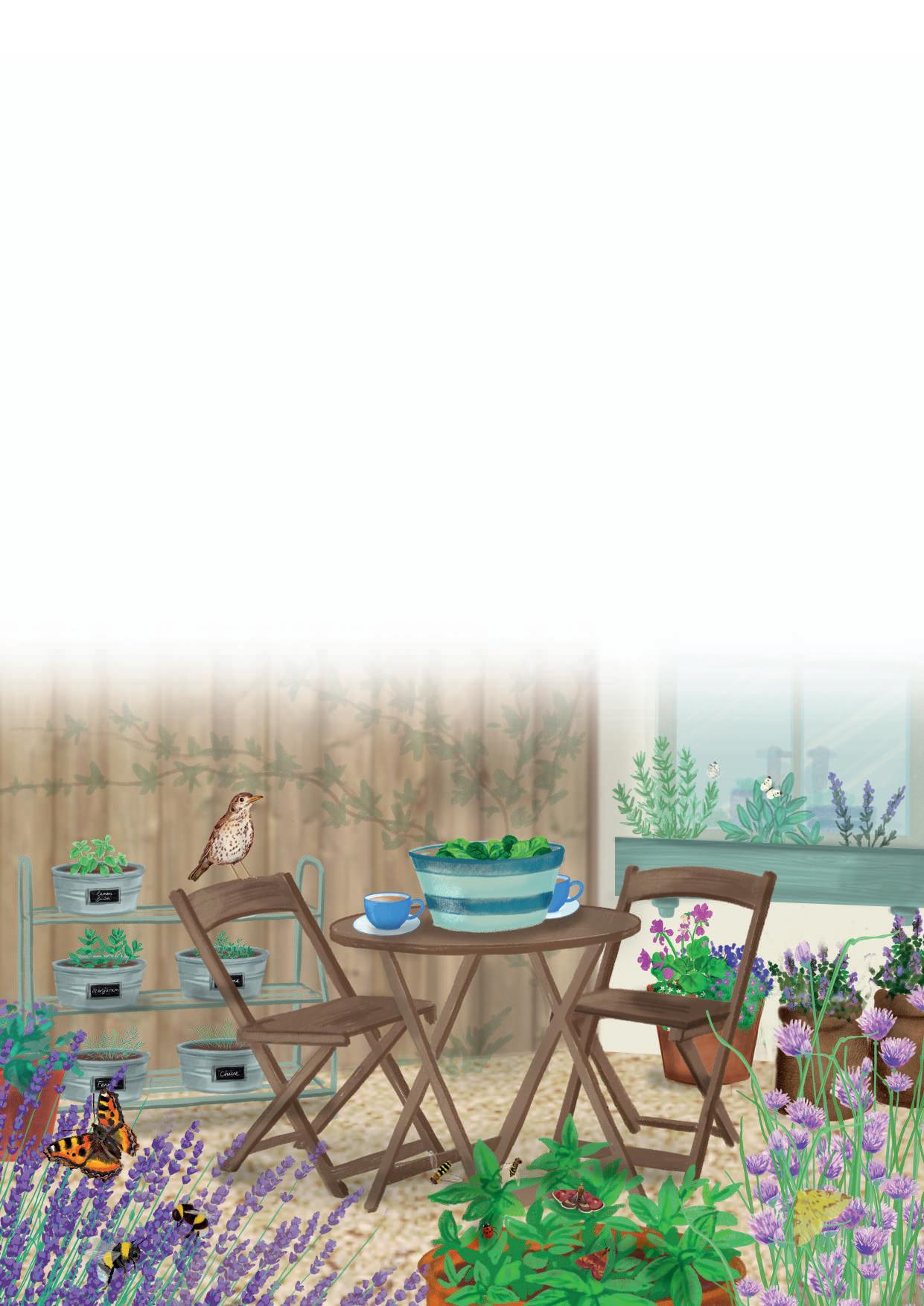
window box, and adding more than one will widen your culinary additions. But do make sure the chosen plants like the same soil, water and light conditions.
An expert herb grower, Jekka McVicar, mainly grows her herbs in raised beds, easier on the back when gardening, but also means she can control the soil conditions and can contain those herbs that like to spread. If you only have a border but want to grow something like lemon balm that will quickly spread everywhere, put it in a large bottomless pot that will restrict the roots.
Herbs are a gateway plant to get people, especially children, gardening as they are easy to grow. And alongside this they attract bees, butterflies, moths, birds and other beneficial insects into the garden, so it’s win win. There’s not much else I like better than to take a hot cup of water into the garden and pick my own tea!

Arit Anderson is a garden designer, writer, podcaster and presenter for Gardeners World. She is also a trustee for the National Garden Scheme, Patron for Tuppeny Barn and Cultivate London, and an Ambassador for the RHS.
ILLUSTRATIONS BY KATY FROST, ARIT HEADSHOT © JULIAN WINSLOW
WILDLIFE GARDENING

Borage
Copes with most soils and dappled shade and is a magnet to many pollinators. Borage flowers look super impressive captured in ice and served in drinks.

Thyme
Thrives in sun and welldrained soil and flowers throughout the summer, making this a popular herb with pollinators. With so many varieties to choose from, they’re great for cooking.
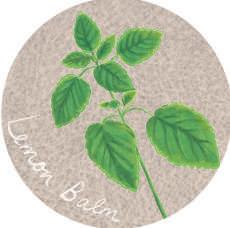
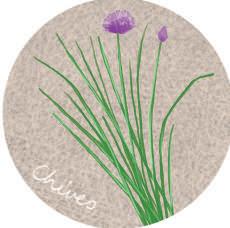
Lemon balm
Spreads easily so it is best to keep it in a container. Renowned for attracting bees and I grow this for making herbal tea.
Chives
A moist but well drained soil will keep chives happy, who in turn when flowering will keep many of our bees happy. The flowers are edible and look decorative in salads.



Wild majoram
Otherwise called oregano, it’s a fantastic plant. Best in welldrained soil, bees and butterflies love it and it’s great for flavouring Mediterranean dishes!
Fennel
Keep in light well drained sandy soil. Great for hoverflies and ladybirds and once they go to seed, birds can feed on them from autumn. One of my favourites.
Mint
Thrives in most soils, it’s so easy to grow and its flowers attracts bees, moths, butterflies and other pollinators. A hardworking herb that lifts salads, sauces and drinks! Loves to spread out – so contain in a pot if you don’t want a garden full.

Lavender
A sunny spot on well-drained soil is best. Bees and butterflies can’t keep away! I had my first lavender scone on the Isle of Wight and it was delicious!
Coronation Gardens for Food & Nature
For information and advice on growing delicious herbs and wildlife-friendly fruit and vegetables in your garden, visit mycoronationgarden.org

19 WILD Summer 2024 | wildlife gardening
Mary Colton
A defender of justice and nature advocate leaves a gift for wildlife.
In the idyllic village of Radwinter, Mary Colton’s legacy stretches beyond her impactful legal career, painting a portrait of a fervent advocate for equal rights and a dedicated supporter of wildlife conservation. To celebrate her remarkable life, we unveil the profound impact she had, reaching far beyond the courtroom and into the heart of nature preservation.
Mary’s introduction into the legal profession in 1955 coincided with a challenging era for women in law. Unyielding in the face of discrimination, she emerged as the first female member of her Chambers, becoming a trailblazer for subsequent generations of female barristers. Patricia May, a colleague, fondly referred to Mary as an “unsung hero of women’s equality”, highlighting her instrumental role in breaking down barriers.


Beyond her legal prowess, Mary’s passion for gender equality extended to her association with the Conservative Party Bar Group, where she authored the booklet ‘Fair and Equal’. Moreover, she actively supported the ‘Stop Stansted Expansion’ campaign, recognising the threat posed to local flora, fauna, and community wellbeing.
Mary’s love for wildlife was not just a casual interest, it was a profound commitment reflected in her active participation in preserving the local environment. Unbeknownst to us, Mary, in her unassuming manner, bequeathed her entire estate to Essex Wildlife Trust in her Will, a testament to her enduring dedication to nature preservation.
Mary Colton was not only a legal luminary and advocate for equal rights but also a dedicated protector of nature. Her legacy lives on in legal precedents

and the flourishing landscapes of Essex, thanks to the substantial gift she left for the conservation of the countryside she cherished, ensuring its beauty endures for future generations. Mary Colton’s imprint remains indelible, ensuring she will be forever cherished and not forgotten, both in the legal profession and the thriving natural world she held so dear.
If you are considering leaving a gift in your Will or you would like any additional information, please contact our Legacy Team on 01621 735233 or scan the QR code to read more.
 Lizzy Steward Legacy Officer
Lizzy Steward Legacy Officer
Roe deer: ondrejprosicky - stock.adobe.com
information Wonderful legacies 20 WILD Summer 2024 |
Scan for

Our Tree of Life at Fingringhoe Wick and Hanningfield Reservoir Nature Discovery Centres allow supporters to remember a loved one, celebrate a joyous occasion or recognise an individual’s love of the nature reserve. All proceeds go towards helping us protect wildlife for perpetuity.
With your support:
A bronze leaf (3 years) could help us to buy five bat boxes for our reserves.
A silver leaf (5 years) could fund a large bee hotel, benefitting solitary bees.
A gold leaf (7 years) could help us pay for a new field gate on a reserve or buy 4kg of native wildflower seed mix to help stop the decline of insects.
A bird (8 years) could help us create or restore a pond, or carry out essential rotovating work in wet grasslands to increase the number of invertebrates, providing more food for breeding waders.



Love Essex • Love Wildlife To find out more, visit www.essexwt.org.uk/tree-of-life or
our
treeoflife@essexwt.org.uk
contact
Legacy Team on
Scan for more information on the Tree of Life Tree of Life
Registered Charity No. 210065 oak leaf: Russell Witherington - stock.adobe.com
Lost ponds
The search for Essex’s missing ponds
A turquoise dragonfly zigzags across the water. A snooping otter appears, hungry and curious. As night falls, a swooping bat gobbles up insects as it dances through the dusky sky. These are only a few of the animals that rely on ponds. Sadly, ponds have been disappearing from Essex for decades, but we are on a mission to bring them back.


22 WILD Summer 2024 | lost ponds

Male emperor dragonfly: sundodger - stock.adobe.com lost ponds 23 WILD Summer 2024 |
Ponds are aquatic treasure troves. There’s little more exciting in the early spring when clumps of jelly hold little comma-shaped tadpoles, waiting to burst out of their cases and explore the world around them. Alongside this, great-crested newts reveal uniquely spotted yellow and amber underbellies, as they glide through the water. Keeping the water healthy, luscious wetland plants absorb nutrients, and provide a great food source for dabbling ducks that nibble upon them from the surface.
Historically, nearly every field in the countryside would have a pond. Today, however, ponds are not so commonplace. In the last 100 years, half a million ponds have been lost.
Where have all the ponds gone?
Mostly, ponds are lost through a lack of appropriate management, in which trees bordering the pond are allowed to grow too big. If they do, their roots can draw up so much water from the pond that the pond starts to drain and dry out. Excess leaf litter falling into the pond can lower the pH of the water, making it more acidic. Excessive tree growth can also overshade a pond, reducing light available for plant growth both on and under the surface.
Some ponds have been infilled due to changes in agricultural practices, particularly in the post-war period. As maximising agricultural efficiency became the name of the game, hedgerows between fields were ripped out to create larger arable spaces, and this hedgerow material was often then thrown into ponds. These in-filled ponds, often referred to as ‘ghost ponds’, can sometimes – though not always – be seen as waterlogged corners in arable fields.
What are we doing to help?
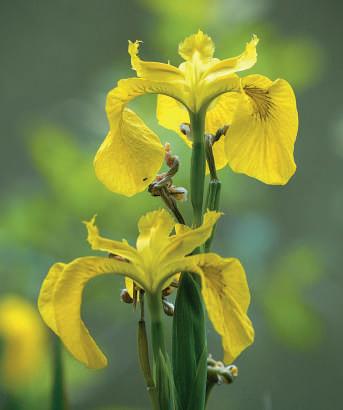
Fortunately, ponds are incredibly resilient, even if they have been lost. With the right management, ponds can bounce back quickly to a healthy ecological state. Essex Wildlife Trust is working with the RSPB and Farm Clusters throughout the county to restore lost ponds.
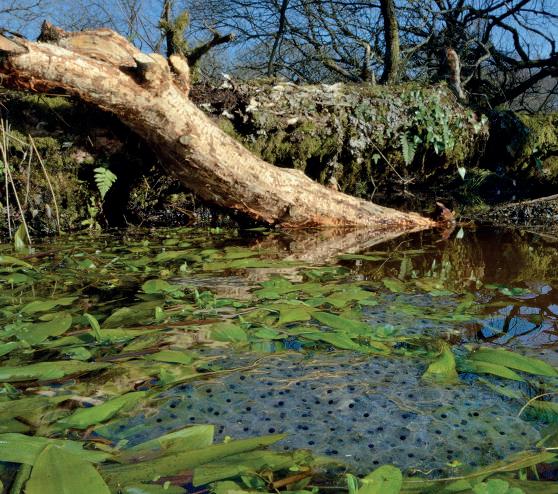
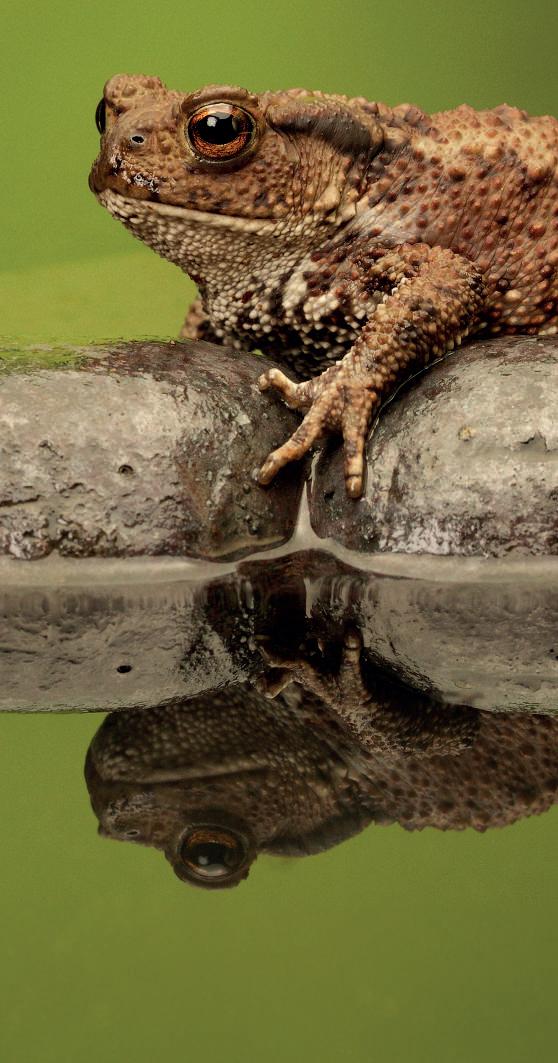
“In the last 100 years, half a million ponds have been lost.”
The first stage of this county-wide restoration project is finding out how many lost ponds we have in Essex. With the help of dedicated River Champion volunteers, 10,000 historic ponds have already been identified – and that’s just across half the county.
The next stage of the project will involve training volunteers to conduct pond condition assessments, so we can build a team of knowledgeable volunteers that will help us support landowners and farmers to restore their lost ponds.
By restoring ponds, we may also witness the return of plants that have been lost long ago in Essex. Underneath layers of mud and leaves, hiding in the dark, are seeds buried beneath the lost ponds, waiting for sunlight and water to re-grow. In some cases, seeds can survive for centuries laying dormant like this.
Thanks to our volunteer mapping team: Will Cockerell, John Hepworth, Bryan Crunden, Marion May, Paul Roberts, Graham Womack, Graham Jobson, Janet Phenix, Sarah Palmer, David Lane, Dave Francis, Tony Thorn, Tim Hayward, Steve Hallam and Kelly Laxton.
lost ponds Common toad: bridgephotography - stock.adobe.com, yellow flag iris: Jim Higham
24 WILD summer 2024 |
Working with farmers
Farmers and landowners across the county form Farm Clusters. These groups are helping wildlife organisations like Essex Wildlife Trust to introduce ponds back to Essex’s rural landscape with funding from Farming & Wildlife Advisory Group (FWAG East). As 99% of the historic ponds in Essex are on farmland, farmers are really supportive of this project and are invested in aiding nature recovery by restoring their ponds.
Emma Gray, from the North Essex Farm Cluster, says:
"Working with partners like Essex Wildlife Trust and the RSPB is absolutely vital to the success of the North Essex Farm Cluster and gives our members access to expert, tailored advice that is rooted within the landscape that we farm. 70% of all land in the UK is used for agriculture, so enabling strong partnerships between farmers and these organisations is essential to achieve sustained, high quality nature recovery at scale in our countryside."
Operation Turtle Dove
One of the main reasons for the decline of turtle doves in the UK is due to changes in the farmed landscape. These declining birds rely on farmland ponds, and so the RSPB has been working alongside Essex Wildlife Trust, The Woodland Trust, University College London (UCL) and the Norfolk Pond Restoration Project team to help recover these important habitats. In April 2023, the RSPB with the help of Carl Sayer from UCL ran a pond restoration event with 50 farmers in attendance. Not every pond can or should be restored, so these events help to assess where restoration efforts should be focused for maximum benefit to wildlife.



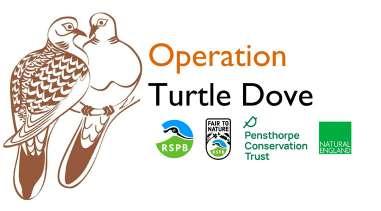
Make your own pond
Feeling inspired? One of the best ways of boosting biodiversity and attracting more wildlife to your garden is by creating a pond. Create your own mini-pond by following our simple DIY:
Pond wildlife checklist
• Bucket/container/pot
• Pond liner
• Big stones
• Collected rainwater
• Pond plants
Scan for a how to video
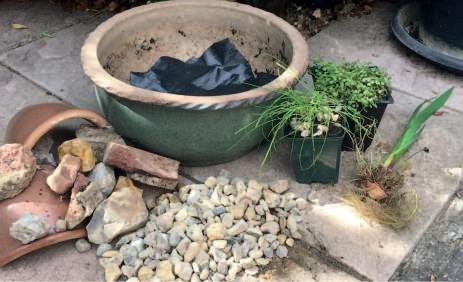
Lost ponds 25 WILD Summer 2024 |
Pond with frogspawn: Nick Upton, turtle dove: Amy Lewis
Farm pond before - Carl Sayer (UCL)
Farm pond after - Carl Sayer (UCL)
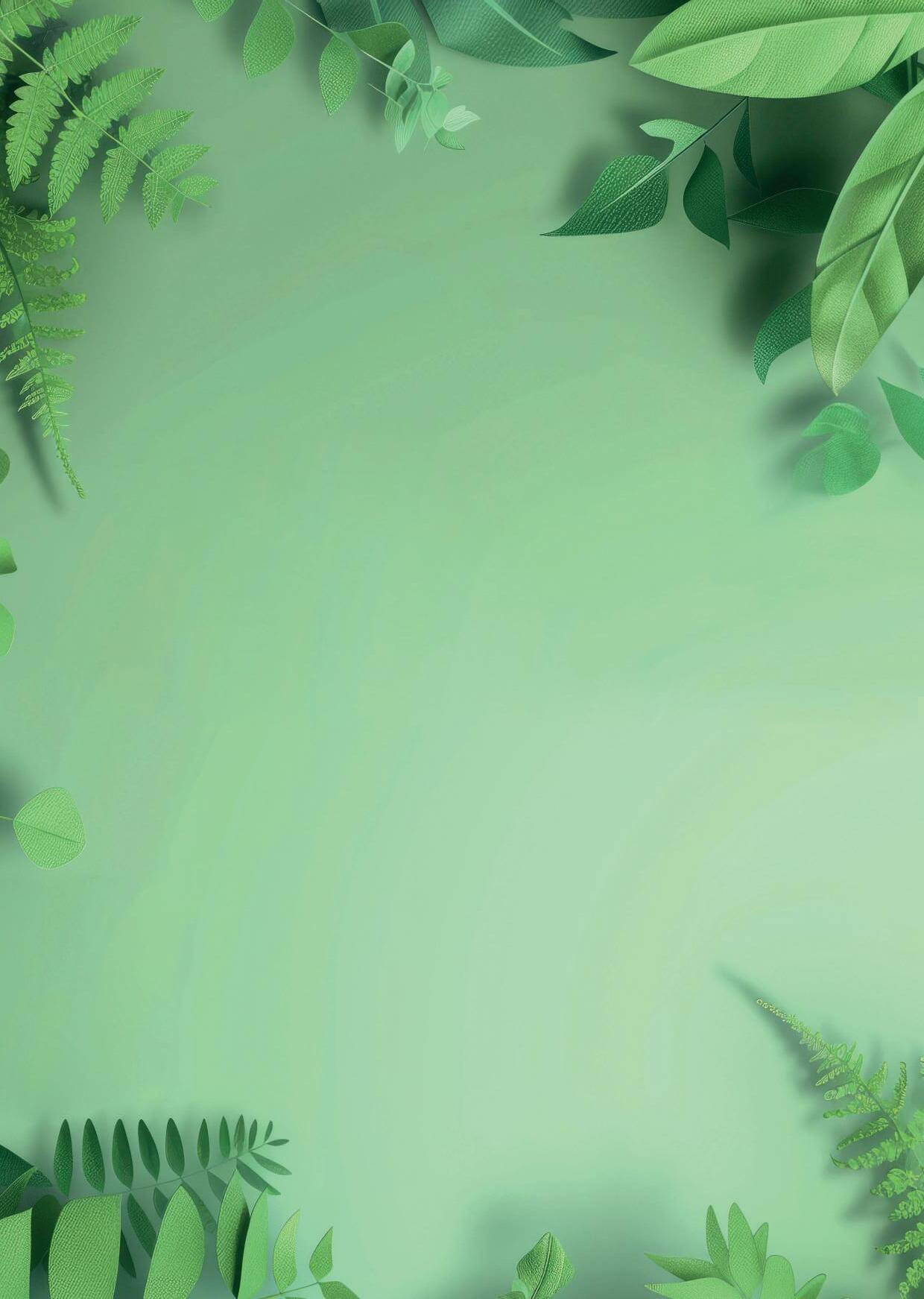
Wild Summer reads
Embark on a journey of discovery this summer with our selection of wild nature guides. Whether you're a seasoned adventurer or a curious novice, there’s something for everyone.
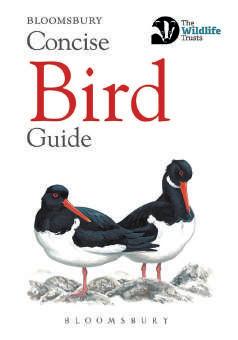





Love Essex • Love Wildlife Registered Charity No. 210065 Scan the QR code or visit our website to find your nearest Naure Discovery Centre: www.essexwt.org.uk/ visit/centres Background: stock.adobe.com

Summer species to spot
What better way to enjoy a glorious summer day than a trip to Essex’s magnificent coast? Whether you’re scouring the beach, hunting the tide pools or braving a dip in the sea, keep your eyes peeled for these captivating coastal creatures.


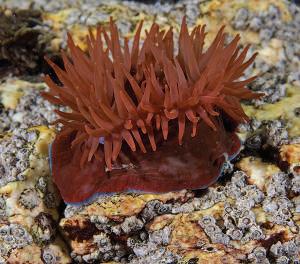


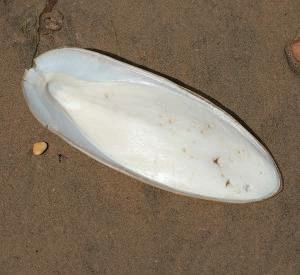




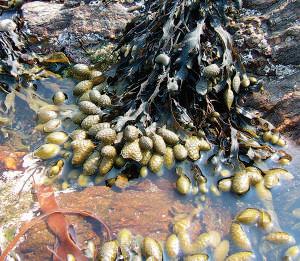

Spotted some of these? We’d love to see. Tag us in your photos and videos on social media or send us a picture of your finds to magazine@essexwt.org.uk
27 WILD Summer 2024 | Sunset over coast: Peter Cairns/2020VISION
Beadlet anemone
Green shore crab
Bladderwrack
Oystercatcher
Little egret
Black-headed gull
Mermaid’s purse
Cuttlebone
Common starfish
Common seal
Moon jellyfish
Sea spider
Blackheaded gull: Jon Hawkins
–Surrey Hills Photography, common seal: Lynne Newton, green shore crab: Kerri Webb, beadle anemone: Paul Naylor, oystercatcher: Tom Hibbert, bladderwrack: Alan Price,
cuttlebone: Dr Malcolm Storey, moon jellyfish: Paul Naylor, common starfish: Lizzie
Wilberforce, mermaid's purse: Philippstock.adobe.com , little egret: Gary Cox, sea spider: Gemma Cosson
species to spot

Dates for your diary

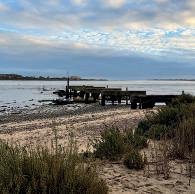





Langdon Nature Tots
• Weekly, Wednesday 5 June – 10 July, 10am-12pm
• Langdon Nature Discovery Park, SS16 6EJ
Join our weekly parent and toddler group, where young children can explore, play, and learn through nature. £42 per child (6 weeks), book online.
Ranger Ramble
• Saturday 9 June, 10.30am-12pm
• Fingringhoe Wick Nature Discovery Park, CO5 7DN
Join us for a seasonal Ranger-led walk around the reserve. Stop to enjoy the seasonal highlights, ask questions and relax in nature! £4 per person, £8 per family, email fingringhoe@essexwt.org.uk or call 01206 729678.
Amphibian & Reptile Talk
• Saturday 15 June, from 6.30pm
• Abberton Reservoir Nature Discovery Park, CO2 0EU
Join Essex Wildlife Trust and Imperial Birds of Prey for an immersive look into the adaptations and variations of our cold-blooded animals. £10 per adult, £7 per child (14 and under), book by calling 01206 738172.
Beach clean
• Sunday 16 June, 14 July & 11 August, 10am-12pm
• The Naze Nature Discovery Centre, CO14 8LE Help clean the local beaches at The Naze. No cost, this 2-mile guided litter pick along the Naze and John Weston nature reserve helps protect this precious coastline.
Monthly Wildlife Walk
• Saturday 6 July, 10.30am-12.30pm
• Thames Chase Forest Centre, Broadfields Farm Pike Lane, RM14 3NS
Havering Local Group’s monthly walk will be from the Thames Chase Forest Centre. We’ll look for flowers, butterflies and birds. Meet in the car park at the visitor centre. Please wear suitable clothing and footwear. Call 07413 649006 for further details.
Deepest Essex
• Thursday 18 July, from 7.30pm
• Shenfield Parish Hall, 60 Hutton Road, Shenfield, CM15 8LB
Brentwood & Billericay Local Group are hosting a talk by experienced geologist Ian Mercer, who will explain the link between the geology of Essex and the wildlife which inhabit our county.
Abberton Moths & Butterfly Course
• Saturday 27 July, 10am-3pm
• Abberton Nature Discovery Park, CO2 0EU
This course is aimed at beginners, designed to give you a start in identifying and finding moths and butterflies. £36 per person, book online.
summer Events and activities
28 WILD Summer 2024 |
Toddler: Adrian Clarke, common frog: Colin Byford, beach litter: Marta Ortigosa, foxglove: Richard Burkmarr















MALDIVES Mini Corner Garden Set. Peartree Road, Stanway, Colchester, Essex CO3 0LA 01206 765444 www.hatfields.com Tag us on Social Media #HatfieldsAtHome Carpets & Rugs Beds & Mattresses Sofas & Recliners Garden Furniture IN-STOCK Our JustGiving page As part of our 260th anniversary, we are doing a fundraising challenge to raise funds for the Essex Wildlife Trust and The Brain Tumour Charity in memory of our late colleague, Joe Brightman. FUNDRAISING FUNDRAISING C H A L L E N G E C H A L L E N G E 2024 2024 www.ellisonssolicitors.com Ellisons Solicitors is a trading name of Ellisons Legal LLP Ellisons Legal LLP is authorised and regulated by the Solicitors Regulation Authority (SRA Number 8001031) Y E A R S 260 C E L E B R A T I N G


Roding Valley Meadows
nature reserve
Here on London’s doorstep, the largest species-rich water meadow in Essex resides. Follow the River Roding through ancient wildflower meadows and tall, towering woodland as it stretches to meet the Thames. Whether you’re a seasoned naturalist or simply a curious soul in search of a great walk, Roding Valley Meadows nature reserve is a must-visit.
30 WILD Summer 2024 |
Valley Meadows nature reserve
Roding
What
to look out for this summer at Roding Valley Meadows
Sparrowhawk
One of the UK’s smallest birds of prey, these birds ambush their prey from a perch or flying low to the ground. Look for rounded wings and striped underbellies and chests.

Grass snake
Spot this harmless reptile slithering its olive-brown body through the cooling waters that this reserve offers.

Devil’s-bit scabious
A vibrant violet flowering plant in the honeysuckle family that loves damp meadows and marshes.

Meadow brown
Associated with meadows and woodlands, look for brushstrokes of orange and little eyespots on this ashy-brown butterfly.

Billie’s facts
Roding valley meadows nature reserve
Address: Grange Farm Centre, Grange Farm Lane Chigwell, IG7 6DP
Access: Mix of footpaths and wheelchair-friendly paths around the reserve. Access from the Roding Valley Recreation Ground or via a footbridge over the M11 at the end of Grange Farm Lane.
Facilities: Toilets, picnic area, accessible toilet, baby changing facilities, outdoor play area.
Dogs: Dogs on leads on the reserve, we have cows grazing here most of the year.
| WILD Summer 2024 31
Sparrowhawk photo - Mark Hamblin/2020VISION, meadow brown - John Bridges, devil's-bit scabious: Amy Lewis
Roding Valley Meadows nature reserve

Imagine a riverside meadow, where water overflows to create silvery vistas across green, grassy fields. Within the lush meadows and surrounding grassland, a colourful array of wildflowers appear, seeking the sun and warmth. You’d be forgiven if you thought that sneezewort, cuckoo flower, meadowsweet and purple loosestrife were names of wildflowers that appear in a fairytale, and that this scene is a fictitious land painted by an author. However, those spring and summertime flowers are real, and a place like this does in fact exist, much closer to home than you’d imagine.
Roding Valley Meadows nature reserve is a magical landscape for wildlife and people and is the largest remaining example of a biodiverse water meadow in the county. With winding trails, picturesque wetland and abundant wildlife, this nature retreat is perfect for those seeking a peaceful sanctuary. Nestled between the M11 and the Central Line of London’s underground network, locals to Chigwell, Buckhurst Hill and Loughton will find this on their doorstep. If you are travelling from afar, this location makes it easily accessible via public transport or by car.
Roding Valley Meadows boasts a myriad of habitats, welcoming an array of wildlife. The nature reserve is comprised of four meadows designated Sites of Special Scientific Interest (SSSI), a fen also designated a SSSI, unimproved flood meadows, hay meadows, veteran oaks, secondary woodland, hedgerows, ponds and a historic green lane. Follow the footpaths and lanes around the reserve to explore all that it has to offer.

Rare water meadow
The true jewel in the crown of Roding Valley Meadows is its wetland habitat. Although the Roding River meanders lazily through the meadows, its water has a big impact upon the wildlife and habitats here, creating a haven for an array

of water-loving creatures. In winter, the banks of this river burst and spill out upon the surrounding meadow. Since January, the water meadow has gone into flood five times already. If you’re lucky, spot the river’s royal visitors darting past, as kingfishers often frequent this area. Easier to spot is a grey heron, frequently seen stretching its stupendous wings on the water’s edge. Paddling in the watery wetland in colder months, you might spot common sandpiper or little grebe.
Wildlife to watch
The special meadows here are managed in a traditional way, by taking a hay cut (or hair cut!) in summer, followed by continual grazing from the four-legged members of the conservation team. Between April – June and September – November, cows chomp, nibble and crop grasslands to a variety of heights, allowing smaller plants to flower. In spring, blooming devil’s-bit scabious, knapweed and clover transform the grasslands with blue, purple, red and white.
32 WILD Summer 2024 | Skylark: phototrip.cz - stock.adobe.com
Water-loving wildflowers are at home on this nature reserve. You’ll find yellow loosestrife, water mint and water plantain coating the gentle banks of the river. Marsh marigold, also known as kingcup, is a large, golden flower that grows in ponds, marshes, ditches and wet woodland. The river valley boasts one of the biggest beds of rare brown sedge in the county.
Where wildflowers appear, insects will follow. Drifts of meadow browns fly lazily through the flowers. Other butterflies to spot include green-veined white, comma and gatekeeper. If dragonflies are a firm favourite for you, the nearby waterway attracts these iridescent minibeasts, so you can see the best of both on your visit.

In spring and summer, sedge warbler, skylark, reed bunting and whitethroat can be found about the river and meadows. Late summer sees flocks of finches, song thrushes, flocks of tits and other seed-eating birds on the seed heads of thistle and teasel. With healthy grasslands and almost 10 miles of hedgerows, it is no surprise that birds of prey like buzzards and red kite hover and hawk above, looking for voles and common shrews.
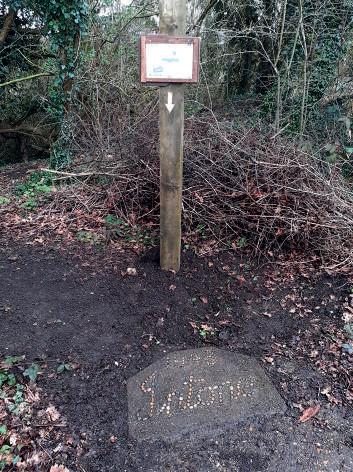

Protecting nature

Behind the tranquillity of this nature reserve, volunteers and conservation colleagues work tirelessly to preserve this wilderness for present and future generations to enjoy. One example of how the team keep this reserve at its best is the recent pond restoration. Andrew’s pond, fondly named after an individual who found solace sitting on the bench by the water here, was recently restored. Water flows in and out of the pond by a dam, previously built by volunteers. However, the build-up of organic material and spread of reed mace reduced the water level. Volunteers cleared the pond by pulling out the reed mace and restored this pond to its previous healthy state.
Events for families
Nature is for everyone. That’s why we run events for little ones in nursery to primary school students, so they can connect with nature even at a young age. Just neighbouring this nature reserve, we offer events at Grange Farm’s woodland. Throughout the year, we run school visits, after-school clubs, home education groups and Nature Tots. This summer, you can join us for our Wilder Holiday Club where we’ll be doing a range of wild activities, including pond dipping and minibeast hunting. For all events and details, visit www.essexwt.org.uk/whats-on

Did you know, Roding Valley Meadows
nature reserve was used as an RAF base from World War 2 until 1964? Some features of this use are still visible today, such as the concrete track, Intone Stone and Barrage Balloon Rings.
Meadows nature reserve | WILD Summer 2024 33
Roding
Valley
Nature Discovery Centres
The long and bright days are here, why not explore a new Nature Discovery Centre you’re yet to visit? Each is surrounded by different habitats with varied species that call it home, but you’ll still get the same great Essex Wildlife Trust experience wherever you go.
Abberton Reservoir Nature Discovery Park
Church Road, Layer-de-la-Haye, Colchester, CO2 0EU 01206 738172 / abberton@essexwt.org.uk
In the summer months the reserve will be alive with skylark singing high in the sky, dragonflies hunting over the various ponds, newts will be spotted grabbing a mouthful of air before diving back down into the depths of the pond, and our wildflower meadows will be buzzing with insects.
Jo Wray, Site Manager
Belfairs Nature Discovery Centre
Eastwood Road North, Leigh-on-Sea, SS9 4LR 01702 477467 / belfairs@essexwt.org.uk
We are looking forward to a packed summer at Belfairs! As well as our work to conserve heath fritillary butterflies (on the wing in June), we will be welcoming Southend Shakespeare Company for a rousing show, and there’s the return of our popular Music In The Woods evening. There will also be a program of events for families throughout the summer holidays. Greg Borgartz, Site Manager
Hanningfield Reservoir
Nature Discovery Park
Hawkswood Road, Downham, Billericay, CM11 1WT 01268 711001 / hanningfield@essexwt.org.uk
Summer at Hanningfield Reservoir is time to spot white-hairstreak butterflies, wood ants and common terns. In addition to walks and trails, summer events will include Nature Tots sessions and Bat Evenings with Wilder Learning Officers, a Tree ID course with our Ranger, and a Macro Photography workshop with photographer Daniel Bridge. Holly Searles, Assistant Centre Manager

Bedfords Park

Bedfords Park Nature Discovery Centre
Broxhill Road, Havering-atte-Bower, RM4 1QH 01708 748646 / bedfords@essexwt.org.uk
After a winter and spring of rain, the spring flowers and birdsong were marvellous. The wildflower meadows see meadow brown, gatekeeper and small heath butterflies flitting about. The grass meadows growing on the London Clay soil are full of plant diversity, gently swaying in the summer breeze. Look for kestrels hunting and red kites soaring high in the thermals. Our Nature Discovery Centre sits 200ft above the floor of the River Thames and the views are commanding, over the Kentish Hills and the skyscrapers of London.
Verity Collins, Site Manager
Fingringhoe Wick Nature Discovery Park
South Green Road, Fingringhoe, Colchester, CO5 7DN 01206 729678 / fingringhoe@essexwt.org.uk
Summer is a wonderful time of year on the reserve, with lots of butterflies and dragonflies to catch your eye. To make the most of the lighter nights, we are running a series of Summer Late Night openings until 9pm on the last Friday of the month, in June, July and August. So come and stay longer or pop in after work to get your nature fix.
Verity Hales, Site Manager
Hanningfield Reservoir
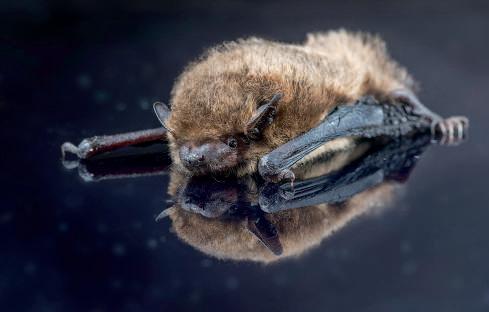
Nature Discovery Centres
34 WILD Summer 2024 |
Red kites: Andy Rouse/2020VISION, soprano pipistrelle: stock.adobe.com, kites: Agnieszka Ziomek, slow worm: Bruce Shortland, common spotted orchids: Paul Lane
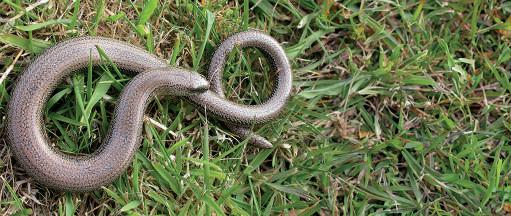

Ingrebourne Valley The Naze Langdon
Ingrebourne Nature Discovery Centre
Hornchurch Country Park, Squadrons Approach, RM12 6TS 01708 520364 / ingrebourne@essexwt.org.uk
We have been enjoying reptile sightings including grass snakes, slow worms and the occasional adder basking in the sun. All the trees and shrubs are green again and our flower beds are in bloom thanks to our wonderful volunteer Steve. Our Woodland Trail has enabled us to hear woodpeckers and see jays in the forest. Green parakeets are also a regular feature here and can be very entertaining (and noisy!) to watch. We have plenty of activities, workshops and exhibitions in the coming months, including our popular Historical Events, remembering the military history of the site.
Kate Tyler, Assistant Centre Manager
Langdon
Nature Discovery Park
Lower Dunton Road, Basildon, SS16 6EJ 01268 419103 / langdon@essexwt.org.uk
After a busy Easter, Langdon was looking lovely with bluebells in May and now we are blessed with orchids growing in our meadows. Our Nature Discovery Centre is celebrating its third anniversary in July and has welcomed thousands of customers through its doors since 2021. Our new ‘cosy area’ provides the perfect quiet place to catch up over a cup of coffee and a slice of Tiptree cake. The site will play host to this year’s ‘South Area Volunteer Thank You’ event, with walks, talks and special acknowledgement awards to our wonderful volunteers who give their time and expertise to the Trust.
Yasmin Ward, Assistant Centre Manager

Thameside Nature Discovery Park
Mucking Wharf Road, Stanford-le-Hope, SS17 0RN 01375 643342 / ttnp@essexwt.org.uk
We have a host of outdoor theatre events at Thameside this summer. On Sunday 7 July, SSC Am Dram group will be performing Oscar Wilde’s “The Liar”. On Wednesday 28 August, Folksy Theatre will be performing Shakespeare’s “As You Like It” and on Friday 30 August, Quantum Theatre will be performing Jemima Puddleduck.
Jimmy Allan, Site Manager
The Naze Nature Discovery Centre
Old Hall Lane, Walton-on-the-Naze, CO14 8LE 01255 679379 / naze@essexwt.org.uk
Summer is the perfect time to visit The Naze to combine classic summer fun with some ‘wild’ education. For birders, it will be a lovely time to join our Ladybirders Walking Group to see the summer migrants. For families, we’ve got fossil hunts and other nature based activities during National Marine Week, 27 July – 11 August. Our popular Kite Festival is back 27 – 28 July with displays with the East Anglian Kite Flyers and a kite decorating workshop.
Helen Daw, Assistant Centre Manager/Visual Merchandiser
Nature Discovery Centres 35 WILD Summer 2024 |
Discover your nearest Centre www.essexwt.org.uk/visit/centres For all event details visit www.essexwt.org.uk/events
Follow each of our Nature Discovery Centres on Facebook
Super
seagrass
Did you know that despite covering only 0.1% of the seabed, seagrass is responsible for approximately 18% of the carbon buried in the ocean? Seagrass is one of the world’s most important species and habitats, providing food and a home for a huge variety of animals as a biodiversity hotspot, whilst also providing vital services for us: from coastal protection and fisheries to being a nature-based solution to climate change thanks to its amazing carbon storage properties.
Whilst there are over 70 species of seagrass worldwide, we only have two on the Essex coast: common eelgrass and dwarf eelgrass. Unfortunately, despite its importance, seagrass is declining at an alarming rate. In the UK, we have lost around 50% of our seagrass since 1985, with some Essex estuaries now having only 2% of their historical seagrass extent. These statistics are worrying, but Essex Wildlife Trust is delivering The Essex Seagrass Project to help protect and restore our seagrass.
common eelgrass

dwarf eelgrass

The Essex Seagrass Project
Since 2021, we’ve been working with Natural England to deliver the ‘LIFE Recreation ReMEDIES’ project. For this, we’ve been assessing recreational activities in areas of current and historical seagrass along the Essex coast. These pressures include activities such as watersports, trampling and moorings. Our fantastic citizen scientists have helped us to conduct 216 surveys, with more to come this year. These enable us to understand which areas

"In the UK, we have lost around 50% of our seagrass since 1985"
are most impacted, and by which activities. This means we can deliver engagement events and work with local communities to raise awareness to protect seagrass and reduce those pressures.
Hope for seagrass
Last year, we were excited to partner up with Project Seagrass to trial different seagrass restoration techniques. Over at the picturesque St. Lawrence Bay, we are lucky to have a healthy, albeit small, seagrass bed, and so we conducted numerous site assessments to investigate the conditions needed for a healthy meadow. From this meadow, we took 240 seagrass cores and transplanted them to areas without seagrass, trialling different densities and sediment types. The process was incredibly muddy but very rewarding, and it was fantastic to work with partners to undertake seagrass restoration trials in Essex.
Super seagrass 36 WILD summer 2024 |
Common eelgrass - Paul Naylor, dwarf eelgrass - Jim Pullen, sea horse - Andrew Pearson, cuttlefish - Julie Hatcher, dogfish - David Stephens
By the time you read this, we will have returned to St. Lawrence to assess how our transplants have done over the winter. This summer, we will be expanding our trials to other sites, and we are hopeful that this will be the beginning of a successful seagrass restoration project. Be sure to keep an eye out for updates on our work!
"Seagrass is responsible for approximately 18% of the carbon buried in the ocean"

Magical marine wildlife

Did you see our April Fool’s?
Although we aren’t really installing underwater signage, we weren’t joking about creating more homes for marine creatures!
 Alex Smith Marine & Coastal Engagement Officer
Alex Smith Marine & Coastal Engagement Officer
Did you know that over 30 times more animals live within seagrass compared to adjacent sandy habitats? Here are our top five animals that rely on seagrass meadows, for food, shelter or nursery habitat:

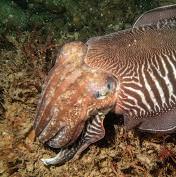
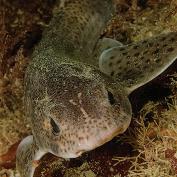
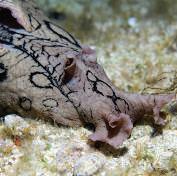
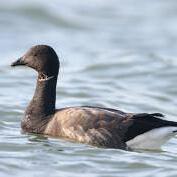
Super seagrass 37 WILD summer 2024 |
s e ahorse c u ttlefish d o gfish s e a hare d ark-bellied r e n t eseeg
Spring Pickers success
Armed with pickers, gloves and bin bags, 477 inspiring individuals, families, businesses, schools, nurseries, walking groups and litter picking groups joined the fight against litter in Essex earlier this year. Spring Pickers, launched for the first time in March, asked people to pick up five pieces of rubbish every day for 10 days. Based on sign ups alone, a whopping 23,850 pieces of litter were removed from the environment between 8 – 19 March. We were delighted to see that so many of you went above and beyond the five-a-day target. Just take a look at the photos below and you’ll see some of the incredible efforts and enthusiasm shown by our Spring Pickers!

Steve Sopp, Wickhay
volunteer Sue Huggett and group
“All sorts of things were found including bubble wrap, cans and plastic. On all four walks conducted for Spring Pickers, the group did their best, although some only scratched the surface.”
South East Essex Ramblers
Thank you to the litter picking groups, walking groups, clean up hubs and libraries who pledged their support to our campaign. You can check out our virtual map to see where Spring Pickers cleaned up the county at www.essexwt.org.uk/spring-pickers
“Not only did I find the campaign rewarding, it also has health benefits, both physically and for our wellbeing in general. Equally a great team building exercise for businesses to get involved with.”
38 WILD Summer 2024 | Spring pickers
Anthony Payne, Monthind Clean TechWyse team
Anthony Payne, Monthind Clean
South East Essex Ramblers
Campaigns
There is nothing quite so distressing and headache-inducing for our feathered friends than when their flight paths unintentionally collide with a window or patio door. This simple silhouette will deter birds from these unfortunate accidents, whilst also adding a nice decorative touch to your windows this summer.
What
you will need
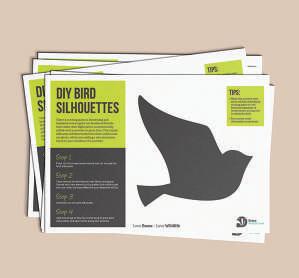
Step 1
Print one of our ready-made stencils and cut it out. This will be your stencil. If you do not have a printer, you can draw a bird silhouette on a piece of paper or cardboard.

• Black paper/card • Bird silhouette/stencil • Pencil • Scissors • Tape/Blu-tac to adhere your silhouettes

Step 2
Trace around the bird stencil on black card/paper. Ensure you trace several as the greater the surface area you can cover, the more effective your deterrent will be.

Step 4
Add some tape or Blu-Tac to the back of your bird silhouettes and place them along the window.
If you make your own bird silhouettes, we’d love to see it, send your pictures to magazine@essexwt.org.uk.


Step 3
Carefully cut out each silhouette.
Tips:
• Make this activity even more wildlife-friendly by reusing paper or card from old magazines or cereal boxes, as long as it is relatively dark.
• Try to place some silhouettes at eye-level.
• Use several silhouettes, as the more you have, the better!
the QR code to download our FREE bird silhouette stencils.
Your step-by -step guide
making
to
bird silhouettes
Great titChris Lawrence
HOW TO HELP WILDLIFE 25 WILD Summer 2024 |
Scan

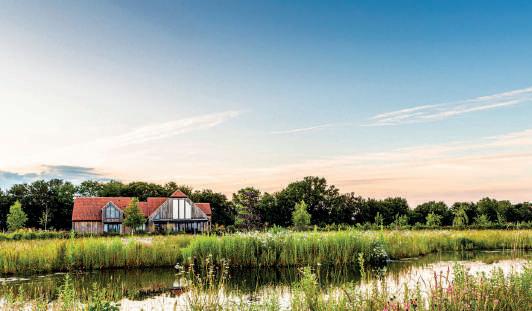
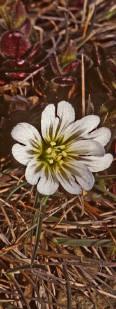


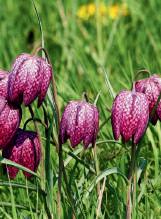










A caring and compassionate experience through a difficult time. Coppice Lane, North End, Between Chelmsford & Great Dunmow, Essex, CM6 3PL 01245 806332 Old Park Meadow Natural Burial Ground oldparkmeadow.co.uk 01376 570464 We help all girls know they can do anything Volunteer with Girlguiding Find out more girlguiding.org.uk You can too R C K P H O T O G R A P H Y V i si t m y we bs i t e f o r m o r e a b o u t B r i ti s h B i r d s , B u t t er f l i es , O rc h i d s , Ra r e B i r d s , R ar e P l a n t s a n d mi sce l l a n e o u s i te m s o f n a t u r e WW W R C K P H O T O G R A P H Y C O U K
We offer burials and ash interments, funerals, services and wakes. Adaptable to any ceremony and a completely personalised service. Reserving a plot in advance is also possible.
UK NEWS

Pyramidal Orchid on a brownfield site being cleared for development
Biodiversity Net Gain falls short
Anew era beckons as Biodiversity Net Gain (BNG) –a requirement on developers to ensure wildlife habitat is left in a better state than it was before the building project began – has become mandatory for all major and minor developments in England. The Wildlife Trusts have actively contributed to the evolution of this legislation for many years, recognising that development is often necessary, but does not have to be achieved in a way that harms nature. This legislation has the potential to transform our planning systems whereby developers deliver more for naturecontributing to its recovery - rather than accelerating its decline. This is vital if we are to meet our international obligations to restore 30 per cent of land and sea for nature by 2030.
Biodiversity Net Gain could not only make a positive contribution towards nature’s recovery but also help address the climate emergency in the process. However, The Wildlife Trusts are concerned that Biodiversity Net Gain is not currently on track to address the severity of the continuing nature crisis. We believe that UK Government needs to set more ambitious targets.
Rachel Hackett, planning and development manager at The Wildlife Trusts, said: “It’s extremely disappointing to see that some of the rules and guidelines for Biodiversity Net Gain fall short of their intended ambition. Given the uncertainties surrounding habitat creation, a gain of 10% will at best hold the tide against nature loss to development and provide a contingency to ensure no overall loss of biodiversity. But if we want to secure real recovery for nature, we need to see at least 20% gain.”
We will continue to call for regulations and guidance to be more effective and strive for a gold standard for Biodiversity Net Gain. Afterall, there is a nature crisis in the UK – one in six species are at risk of extinction and the UK is one of the most nature depleted countries in the world. We propose developers and local authorities go beyond the minimum requirements and aim for at least a 20% gain for nature.
We’d like to see the UK Government changing policy and guidance so the sale of excess biodiversity units is prevented. We’d like no further broadening of permitted development rules and Government to provide policy guidance to ensure Biodiversity Net Gain for
permitted development is made a matter for local consideration rather than a blanket exemption.
Local Planning Authorities also need to be resourced with the right level of skills and capacity across departments to oversee the Biodiversity Net Gain process to ensure it is properly implemented, monitored and enforced. Finally, Biodiversity Net Gain must be ‘additional’ to existing mechanisms for nature conservation and enhancement.
When it comes to protecting, restoring and managing the natural environment, The Wildlife Trusts up and down the country have unmatched experience, knowledge and expertise. Nature conservation is our primary charitable objective. So, for decades we have delivered high-quality Biodiversity Net Gain habitat and offered specialist advice and consultancy to developers, local planning authorities, partners and communities. All our funding is invested with the purpose of delivering gains for nature.
42 WILD Summer 2024 Uk news |
For more information visit wildlifetrusts.org/ biodiversity-net-gain UK UPDATE ORCHID ON DEVELOPMENT SITE © TERRY WHITTAKER/2020VISION
The Great Big Nature Survey
Last year The Wildlife Trusts launched The Great Big Nature Survey, calling on the UK public to share their views on some of the most important issues affecting people and wildlife. We asked questions like: How often do you get out into nature? Should people try to control nature to better protect it? How important are green spaces to you? And what roles should people, business, and government have in looking after nature?
The Great Big Nature Survey helps to identify what people in the UK and islands really think about wildlife and how we, as a society, should protect it. The results also support The Wildlife Trusts when holding the UK governments to account over their environmental policies and priorities, in this election year and beyond.

Whatever your views on nature, however important (or not) it is to you, join more than 21,000 people that have already taken part and make your voice heard by taking The Great Big Nature survey today. If you’ve taken the survey before, thank you! Do please take it again, so that we can track how people’s views on these important issues have changed over time, especially as we run up to the General Election.
Have your say at wildlifetrusts.org/ great-big-nature-survey
Making Friends With Molluscs
The Wildlife Trusts have joined forces with the Royal Horticultural Society (RHS) to publish a new Wild About Gardens guide, Making Friends with Molluscs. The guide reveals the fascinating world of slugs and snails and challenges common myths about these creatures. For example, did you know that the majority of the 150 slug and snail species in the UK can actually positively contribute to your garden ecosystem? One of their most significant roles is as nature’s clean-up crew; molluscs feed on rotting plants, fungi, dung and even

carrion, helping to recycle nitrogen and other nutrients and minerals back into the soil. They can also clean algae off the glass of greenhouses, leaving behind their trademark trails.
Many of our much-loved garden visitors, including frogs, song thrushes, and ground beetles, rely on slugs and snails as a key food source. By supporting these molluscs, gardeners indirectly support a diverse array of wildlife too.
For more information visit wildaboutgardens.org.uk
Tell us what you think!
We’d love to get your feedback on your membership magazine. Can you help us by taking part in a short survey to share your views?
You’ll find it at wildlifetrusts.org/magazine-survey
UK HIGHLIGHTS
Discover how The Wildlife Trusts are helping wildlife across the UK

Strawberry Hill Forever
The Wildlife Trust for Beds, Cambs and Northants is a step closer to securing ownership of the uniquely special Strawberry Hill, thanks to generous funding from Biffa Award. Securing the future of a Bedfordshire farm that has been left to rewild for 25 years represents one of the most exciting land transactions in the Wildlife Trust’s history. wtru.st/BCN-Strawberry-Hill
Booming Success
Prompted by the near-extinction of a member of the heron family, a long term conservation project by Herts and Middlesex Wildlife Trust and conservation partners has doubled the area of bittern-suitable reedbed habitat. With a breakthrough this year, the first male bittern in recent history was recorded ‘booming,’ making its mating call on Amwell Nature Reserve. wtru.st/Herts-bittern

Sula Rules The Waves
Alderney Wildlife Trust has recorded its seabird life in more detail than any other island, all thanks to Sula, the wildlife survey boat. Now, Sula needs sponsorship to support her important role in advancing conservation. Her next voyage is to help monitor the island’s grey seals, protect guillemot colonies and map Alderney’s tidal flow and marine habitats.
wtru.st/Sula-Sponsorship
43 WILD Summer 2024 uk news | UK UPDATE
LADIES SITTING IN A PARK © THE WILDLIFE TRUSTS; HOLDING A SNAIL © ALAN PRICE; BITTERN © JAMIE HALL
We travel back to...
2009
...to give you a glimpse of our past and see what was happening at the Trust.
What was happening globally in 2009:
• Matt Smith was named as the new Doctor Who, taking over from David Tennant.
• Woolworths officially closed in the UK, with 813 stores shut.
• Barack Obama became President of the United States.
• The “King of Pop” Michael Jackson died.
• The United Nations General Assembly declared 2009 as the International Year of Natural Fibres.
In 2007, work began on increasing the capacity of Abberton Reservoir by an additional 41,000 megalitres. As part of Essex & Suffolk Water’s project, the previously concrete edge was re-profiled to make it more attractive to water birds and to allow marshland to develop. Essex Wildlife Trust’s original centre (opened in 1990) and nature reserve fell within the footprint of the enlarged reservoir so work got underway on creating a better reserve and better centre. In 2009, Jo Wray, Site Manager at Abberton Reservoir Nature Discovery Park updated everyone on the changes happening at Abberton.

The NEW Abberton Reservoir nature reserve
Walking through Wild Wood today, it seems hard to think that it was only six years ago that we started to create it. Time certainly flies and now this once barren arable field has an immature, yet thriving woodland. All sorts of wildlife has established its home here from brown hares to common snipe and skylarks.
600m of hedgerow was planted back in 2007; once the new visitor centre is built then this will be extended and will link Wild Wood with scrub areas providing corridors for wildlife. Several stag beetle pyramids have been put in around the site along with insect homes. Reserve volunteers are also building 50 bird boxes, in celebration of our 50th birthday; these will be put into Wild Wood on posts and will hopefully provide valuable breeding places for small birds. There are also plans for a hibernaculum providing habitat for lizards and grass snakes. Two ponds have been created, although they still need finishing and some plants to establish.
The final crop to be grown on the Peninsular field was taken off this summer; farm staff will soon be ploughing and spreading a grass seed mix to allow us to establish footpaths over this area during the reservoir raising project. We have started to take down our bird hides, before the
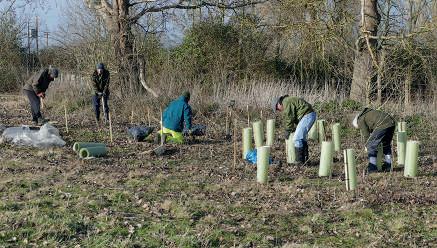
site becomes a construction zone; these will be made into smaller hides which will be placed around the Peninsular field allowing visitors to have views of the works and still hopefully gain access to wildfowl.
We continue to work closely with Essex & Suffolk Water and are all looking forward to the raising project and centre build starting in 2010.

15 years on Wild Wood is now a thriving woodland, the ponds are full of amphibians (and a regular grass snake!) and the ‘new’ Abberton Reservoir Nature Discovery Centre now welcomes thousands of people through its doors every month, to enjoy this beautiful nature reserve.
44 WILD Summer 2024 | Time Tunnel








Funeral Directors and Monumental Stone Masons Our Services Professional, qualified, and caring staff. Monthly bereavement group meetings. and catering. Pre-paid funeral plans. Funeral Planning ‘W Disabled access - home visits. Green and woodland burials. Prestigious Rolls Royce Fleet. Mercedes and Land Rover Fleet. New Headstones & Renovations Available 120 High Street, Brentwood, CM14 4AS Call 01277 886780 24 hrs help line 2 High Street, Billericay, CM12 9BG Call 01277 886798 24 hrs help line 24 hr s helpline 2 High Street,Billericay, CM12 9BG Call 01 2 77886 79 8 24 hrshe lp lin e www. b ennetts f unera ls. co.u k Gree Prestigiou Mercedes New H ea & Ren Call 01 2 7788 6 78 0 24 hr s helpline High Street,Billericay, CM12 9BG Call 01 2 7788 6798 24 hrshe lp lin e www. b ennetts f unera ls. co.u k Gree n a n d Prestigiou s Mercedes a D isabled acce New ,Brentw oo d, 6780 HighStreet,Billericay, Call 01 27 78 86 798 24 hrs he lp lin e www . bennettsfunerals.co.u k Green a n d w oodland b u rial s. Pre s tigio u s R olls Royce Fleet Fu n eral Plan nin g ‘ W is hLis t’ Mercede s a n d Lan d Ro v er Fleet Di s abled acces s - hom e vi s it s. N ew He ad sto n es & Re no vatio ns A vailabl e Our Family company: Meeting Today’s Needs with Traditional Values Funeral Directors and Monumental Stone Masons Our Services Professional, qualified, and caring staff. Monthly bereavement group meetings. and catering. Pre-paid funeral plans. Funeral Planning ‘ ish List’. Disabled access - home visits. Green and woodland burials. Prestigious Rolls Royce Fleet. Mercedes and Land Rover Fleet. New Headstones & Renovations Available Call 01277 886780 24 hrs help line 2 High Street, Billericay, CM12 9BG Call 01277 886798 24 hrs help line www.bennettsfunerals.co.uk 2 High Street,Billericay, CM12 9BG Call 01 2 77886 79 8 24 hrshe l p l in e www. b ennetts f unera ls. co.u k 24 hr s he lpline High Street,Billericay, CM12 9BG Call 01 2 7788 6798 24 hrshe l p l in e www. b ennetts f unera ls. co.u k Gree n Prestigiou Mercedes D isabled New 88 6780 y, 86 798 24 hrs he l p l in e www . bennettsfunerals.co.u k Green a n d w oodland b u rial Pre s tigio u s R olls Royce Fleet Fu n eral Plan nin g ‘ W is hLis Mercede s a n d Lan d Ro v er Di s abled acces s - hom e vi N ew He ad sto n es & Re no vatio ns A vailabl e Our Family company: Meeting Today’s Needs with Traditional Values Funeral Offices: 120 High Street, Brentwood, CM14 4AS Call 01277 886780 24 hours 2 High Street, Billericay, CM12 9BG Call 01277
hours
Our Family Company: Meeting Today’s Needs with Traditional Values Funeral Directors and Monumental Stone Masons Every single rescued resident that calls Hopefield home, from the largest cow to the tiniest sugar glider, knows nothing but love and safety now they’re here. We couldn’t do any of it without YOUR support! Our animals often come from terrible situations that require us not just to love them, but to rehabilitate them, provide them with extensive veterinary care and to help fix their broken hearts.
do,
can, join our Exclusive Members Group where, in return for a £2 per month donation, you will get exclusive content, special offers and the latest Hopefield news.
penny goes back into caring for our amazing animals.
you
us all! PLEASE JOIN OUR EXCLUSIVE MEMBERS GROUP Hopefield Animal Sanctuary Sawyers Hall Lane, Brentwood, Essex CM15 9BZ Registered Charity No: 1181186 www.hopefield.org.uk
886798 24
www.bennettsfunerals.co.uk
Please
if you
Every
Thank
from
How is your general knowledge on wildlife and the wild places of our country? Test yourself with our nature crossword.
Billie’s Wildlife Crossword
Top tip: You might find some of the answers if you read this magazine carefully.
Clues Across
3 Small water source that boosts biodiversity. (4)
6 Essex Wildlife Trust’s stronghold for nightingales. (11)
7 Hawk-moth that shares its name with an overseas bird species. (11)
8 As their name indicates, these birds can fly to almost 70mph. (5)
11 Similar to a dragonfly but with slimmer bodies. (9)
12 Colourful pollinator alongside bees, moths and wasps. (9)
Clues down
1 Rare fritillary butterfly that is found in Essex and named after an open-land habitat. (5)
2 Type of jellyfish commonly found in Essex waters. (4)
4 Insect-mimicking orchid with vibrant purple, yellow and pink colourations. (3)
5 Species of bat that resides in the Trust’s maternity roost box. (11)
9 Grass-dwelling reptile that enjoys swimming in water in the summer. (5)
10 Type of owl known for twit-twoo call between pairs. (5)
Wildlife facts
You are what you eat
It is said that a sea hare’s colour comes from the colour of seaweed they eat. You’ll find green and maroon sea hares in rockpools.
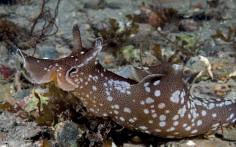
Hidden gems
In Britain, there are around 57 different species of orchid. We have at least 12 species on our nature reserves.

The ultimate veggie
Water voles eat over 200 different species of plant. Hawthorn and willow are some of their favourites.

46 WILD Summer 2024 | Wildlife quiz time
Answers from Spring 2024: Across: 2. Lizard 4. Cuckoo 6. Prickle 8. Oystercatcher 11. Eelgrass 12. Feet Down 1. Woodpeckers 3. Dandelion 7. Saltmarsh 9. Chaffinch 10. Bluebell
11 9 8 7 1 4 3 2 6 5 12 10 The
will be revealed in our Autumn 2024 edition of WILD.
answers
Sea hare:
Whittaker/2020VISION
Paul Naylor, man orchid: Bruce Shortland, water vole: Terry
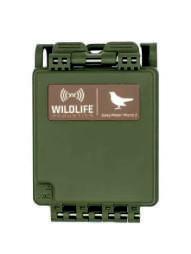
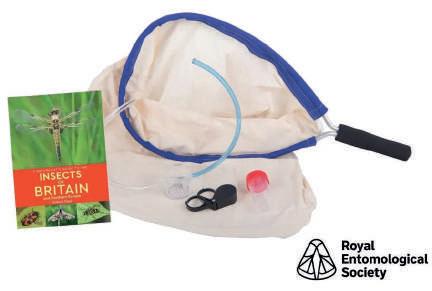








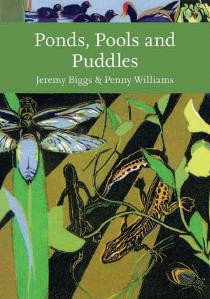




Unrivalled product range Over 140,000 books and equipment products Rapid shipping UK and Worldwide Exceptional customer service Specialist help and advice #257972 £17.99 £25.00 #259103 £7.99 £12.99 #262562 £9.95 £12.99 #262191 £27.99 #127505 £26.99 £35.00 www.nhbs.com | 01803 865913 #262796 £245.00 #264159 £59.99 £64.00 #261234 £185.00 £199.00 #259714 £89.95 Song Meter Micro 2 Num’axes PIE1059 Trail Camera #264322 £10.99 #263233 £17.99 #151916 £19.99 Royal Entomological Society Educational Bug Hunting Kit NHBS Moth Trap Starter Kit Prices correct at time of printing. Free voucher offer ends 31st July 2024 Everything for wildlife, ecology and conservation with book orders over £40* to use with your next order! * Voucher will be supplied with your order. Limit of one per customer use the code: WILD24 FREE £10 VOUCHER
Wilder Holiday Club

Fun nature activities for children, led by our wilder experts
Take part in seashore searching, fossil hunting, fire lighting, den building, pond dipping, animal tracking and much more at our Wilder Holiday Club.
Wilder Holiday Club is for children aged 5 to 11 and will be running from 9am to 3pm at sites across the county between Monday 29 July and Friday 16 August. Activities will vary by site.
To book, visit our website or scan the QR code:
Love Essex • Love Wildlife www.essexwt.org.uk/wilder-holiday-club
Registered Charity No. 210065.
Pond dipping photo: Monkey Business - stock.adobe.com




































 Dean Williams Ranger at Chafford Gorges Nature Discovery Park
Dean Williams Ranger at Chafford Gorges Nature Discovery Park

























































 Lizzy Steward Legacy Officer
Lizzy Steward Legacy Officer














































































 Alex Smith Marine & Coastal Engagement Officer
Alex Smith Marine & Coastal Engagement Officer





























































